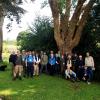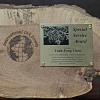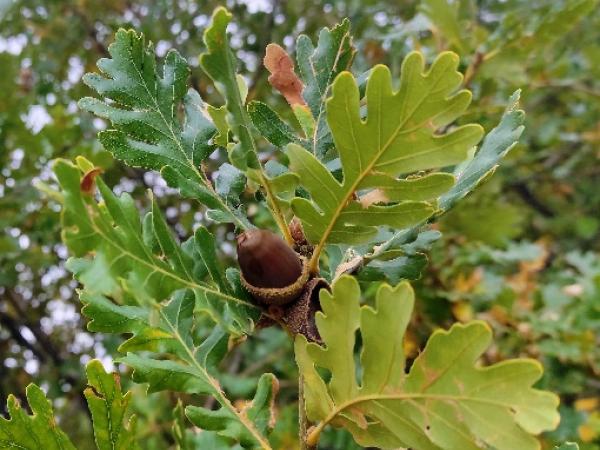Editor's Picks
Plant Focus
There is something majestic in the appearance of old oaks, in their quietness and calmness. Something that draws us in and makes us think of the past. In this article I will describe an unusual kind of historic oak, a kind that would make you stop for a moment and wonder about life, time, and purpose.
In Serbian tradition, in almost every village or hamlet there is at least one tree deemed by the inhabitants to be special. A sacred tree. And most of these trees are oaks. It is believed that they possess unusual powers, that they are a physical manifestation of divine energy, here on Earth. Hence, they must not be hurt in any way imaginable—or they will strike back. Not even a leaf can be plucked or a dead branch broken. This belief is probably one of the main reasons why some of these trees survived many turbulent historic events (such as the Balkan Wars and the World Wars) that usually led to devastation of forests and trees in Serbia. It seems as if the local people would go to great lengths to defend these sacred trees. Due to these destructive historical events, most oak forests in Serbia are relatively young coppice (Banković et al. 2009), and these old sacred oaks are some of the last examples of large old oaks in Serbia.
These sacred trees protect the village and its inhabitants and they may even be asked for rain for the crops. The people cherish their beloved sacred trees, and once a year a religious ceremony (slava) is performed together with the local priest of the Orthodox Church. Every year one of the inhabitants has the honor to prepare this ceremony, which usually takes place in spring or summer and is dedicated to an Orthodox holiday. The sacred trees are called zapisi or molitve (meaning “an inscription” or “a prayer”) in Serbian language, sometimes referred to as “cross-trees” in English (Jokić & Nikolić 2014).
The story of sacred trees begins before the 7th century, when Serbs as Slavic pantheistic people used trees as temples in the open. Once the Serbs had converted to Christianity in the 7thcentury, the Orthodox Church accepted some of the old customs, among them the tradition of worship of sacred trees. The trees now served as temples dedicated to the Orthodox faith instead of the old Slavic Gods such as Svetovid or Perun for example. Later, when more churches were built in the medieval period, their significance as temples may have been less pronounced, but they still haven't lost any of their initial importance in the people’s sentiments. However, when the Ottomans invaded Europe and conquered the Serbian lands (15th century), these trees once again served their old purpose in many places throughout the country.

Today, it is unknown how many of these trees there are exactly. Some of them have legal protection—although they may not need it in practice as they are more than protected by the fact that nobody dares harm them. However, it is a good thing as these protected trees are the only sacred trees that we have a written record of. Most of the officially protected sacred trees are oaks, most notably Quercus robur followed by Q. cerris, Q. frainetto, and Q. petraea (Jokić & Nikolić 2014). And the vast majority of sacred trees are unprotected.
A champion sacred Quercus cerris in Progorelica
In this article I will share a personal experience with one of these unprotected sacred trees that I found near my hometown while conducting research in 2016.
I was an MSc student at the Faculty of Forestry, University of Belgrade, working on my thesis, which was related to the growth characteristics of Q. robur and Q. frainetto seedlings. I was so in love with oaks that this work wasn't enough for me and I always looked for a new opportunity to go to the field and learn more about them. A call for papers for a student conference that occurred in that period helped me move out of Belgrade and head back home to look for material to be presented.
So, my friend and colleague, Marko Marković, and I initiated a little excursion with the support of Professor Martin Bobinac from the Faculty of Forestry, University of Belgrade, who gave us some advice on how to measure veteran trees and lent us a hypsometer. My friend Marko visited some villages close to Jagodina and I went with my father on a field trip around Kraljevo. We had no funding, so our scope was limited to only a few villages. But still, we found 14 trees, of which 13 were oaks—seven Q. robur, three Q. frainetto, and three Q. cerris.
One of these oaks stood out. It was a Quercus cerris tree in the village of Progorelica on a private property held by Mr. Rade Nešović. When we approached the tree, one the first things that our host said was that the canopy is so big that a wedding can be easily held below it.
The tree had a 2.07 m DBH in spring 2016 (circumference was 650 cm) and a total height of 26.6 m. It was definitely the largest Q. cerris tree I have ever seen, so I wondered if any larger specimen has been reported elsewhere in Serbia. It took me weeks of collecting literature to investigate this further and to make sure no data was missed. I looked in dendrology handbooks from the University, in the books dedicated to veteran trees, and in the vast records of the protected oaks at the Institute for Nature Conservation of Serbia. However, no data matched the massive 2.07 m DBH of this monumental oak. I believe that it is the largest recorded Q. cerris in Serbia. If there is a larger one somewhere, it must be some unprotected sacred tree somewhere in the country.

There is even a small anecdote about this tree that was told to us by the owner of the property. He learned it from his predecessors, who remembered the period of the rule of King Alexander I of Yugoslavia (Prince Regent 1918–1929 and King 1929–1934). The King went on a visit to the medieval monastery of Studenica (12th century) and used this tree as a place to rest on the long trek from Belgrade to Studenica. It is really an ideal place for a pause on such a journey, as the tree is located at the entrance to the inhospitable Ibar Gorge, a strenuous climb up to the monastery. The owner even remembers that the King ate chicken under this tree!
Acknowledgments
I would like to thank my dear friend Mirko Kočetanović who read the article and gave me some useful advices.
Works cited
Banković, S., M. Medarević, D. Pantić, and N. Petrović. 2009. The National Forest Inventory of the Republic of Serbia — the growing stock of the Republic of Serbia. Ministry of Agriculture, Forestry and Water Management of the Republic of Serbia-Forest Directorate, Belgrade
Jokić, D. and V. Nikolić. 2014. Cross-trees as protected sites. Zaštita prirode 64(1), 31–39
Šušić, N., M. Marković, I. Kerkez, A. Bauer-Živković, and M. Bobinac, M. 2016. Protected and unprotected trees “zapisi” as specific natural resources in Serbia. Proceedings of the 2nd International Student Environmental Conference FISEC, 18–22 May, Belgrade, Republic of Serbia, 103–110















